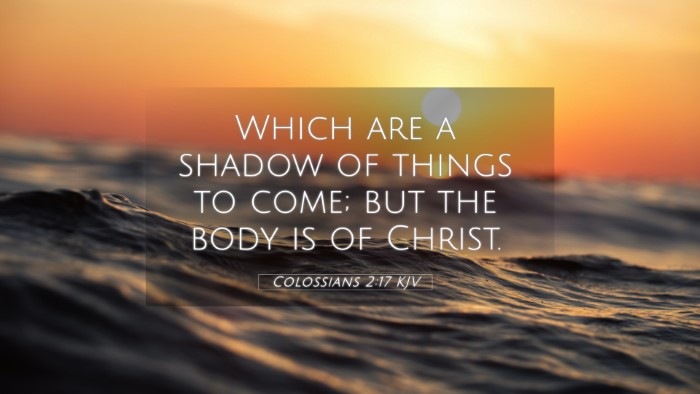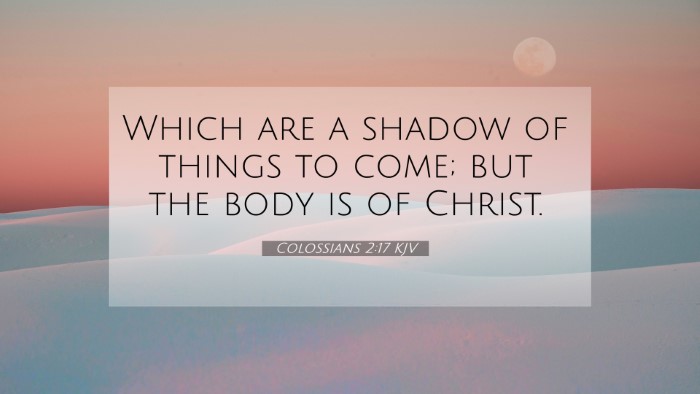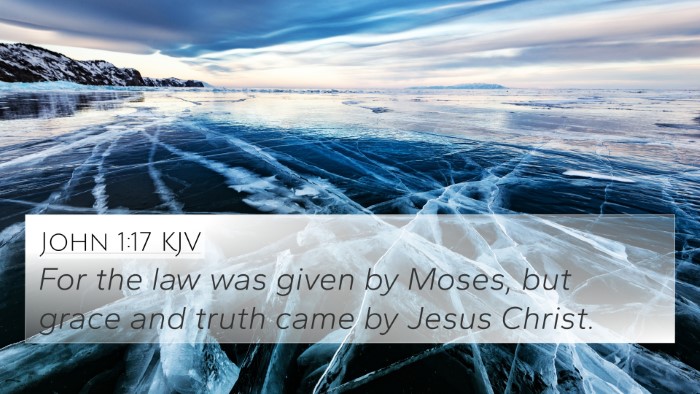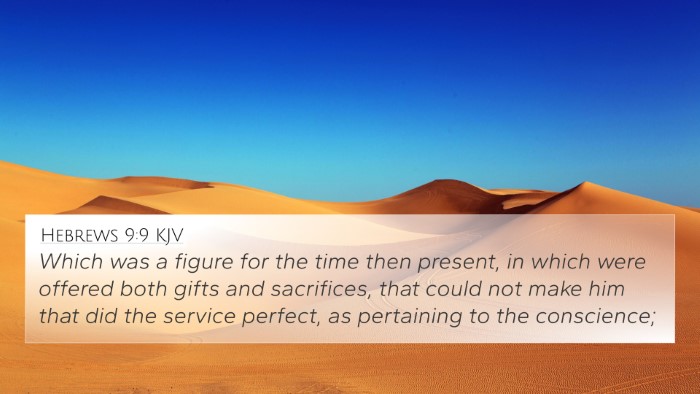Understanding Colossians 2:17
Colossians 2:17 states: "Which are a shadow of things to come; but the body is of Christ." This verse highlights the distinction between the Old Covenant's rituals and the New Covenant established through Jesus Christ. The Apostle Paul emphasizes that the laws and practices of the Old Testament served as a foreshadowing of the ultimate reality found in Christ.
Commentary Insights
Matthew Henry's Commentary:
Henry indicates that the Apostle's intention is to direct believers away from legalistic observances and towards a full understanding of Christ's fulfillment of the law. The functions of laws and festivals were merely preliminary and served a preparatory role leading to Christ. Now, the fullness of salvation and spiritual substance is found in Him.
Albert Barnes' Commentary:
Barnes elaborates that the observances mentioned (festivals, new moons, Sabbaths) were external and significant only as they pointed to deeper spiritual truths. Believers are encouraged to behold Christ as the essence of all that was foreshadowed. The phrases "a shadow" and "the body is of Christ" contrast the temporal with the eternal reality.
Adam Clarke's Commentary:
Clarke points out that Paul highlights the inadequacy of ritualistic practices without an acknowledgment of Christ. The passage serves as a pivotal reminder that to return to the shadows is to diminish the importance of Christ's redemptive work on the cross. The "body of Christ" signifies His church as well as His personal deity.
Connections Between Bible Verses
Understanding Colossians 2:17 requires examining its contextual and thematic connections within the Bible. Here are some cross-references:
- Hebrews 10:1: "For the law, having a shadow of good things to come, and not the very image of the things, can never with those sacrifices which they offered year by year continually make the comers thereunto perfect."
- Galatians 4:4-5: "But when the fullness of the time was come, God sent forth his Son, made of a woman, made under the law, to redeem them that were under the law, that we might receive the adoption of sons."
- Romans 10:4: "For Christ is the end of the law for righteousness to everyone that believeth."
- Matthew 5:17: "Think not that I am come to destroy the law, or the prophets: I am not come to destroy, but to fulfill."
- 2 Corinthians 3:6: "Who also hath made us able ministers of the new testament; not of the letter, but of the spirit: for the letter killeth, but the spirit giveth life."
- Ephesians 2:15: "Having abolished in his flesh the enmity, even the law of commandments contained in ordinances; for to make in himself of twain one new man, so making peace."
- 1 Peter 1:10-12: "Of which salvation the prophets have enquired and searched diligently, who prophesied of the grace that should come unto you."
Bible Verse Interpretation
This verse effectively teaches that the physical observances of the law were types and shadows pointing towards Christ. Emphasizing that true spiritual fulfillment is realized not through adherence to the law but through faith in Christ. Believers today should reflect on the ultimate purpose behind the commands and see them as leading towards salvation rather than serving as a means to righteousness.
Thematic Bible Verse Connections
In exploring the connections between Bible verses, it's clear that Colossians 2:17 reinforces the theme of Christ's all-sufficiency and the redundancy of the Old Covenant observances once He came. Each cross-reference contributes to a broader understanding of biblical theology and serves as tools for deeper Bible study.
Tools for Bible Cross-Referencing
For those interested in conducting a comparative Bible verse analysis, utilizing Bible concordances, cross-reference guides, and systematic cross-reference methods can enhance the study. These resources can aid in identifying connections between Old and New Testament scriptures.
Conclusion
Colossians 2:17 encapsulates a pivotal theological truth about the relationship between the law and grace, the Old and the New. Believers are called to appreciate how Old Testament practices were preparatory, eventually culminating in Christ’s sacrificial death and resurrection, offering a transformative faith that surpasses the ritualistic nature of earlier practices.








